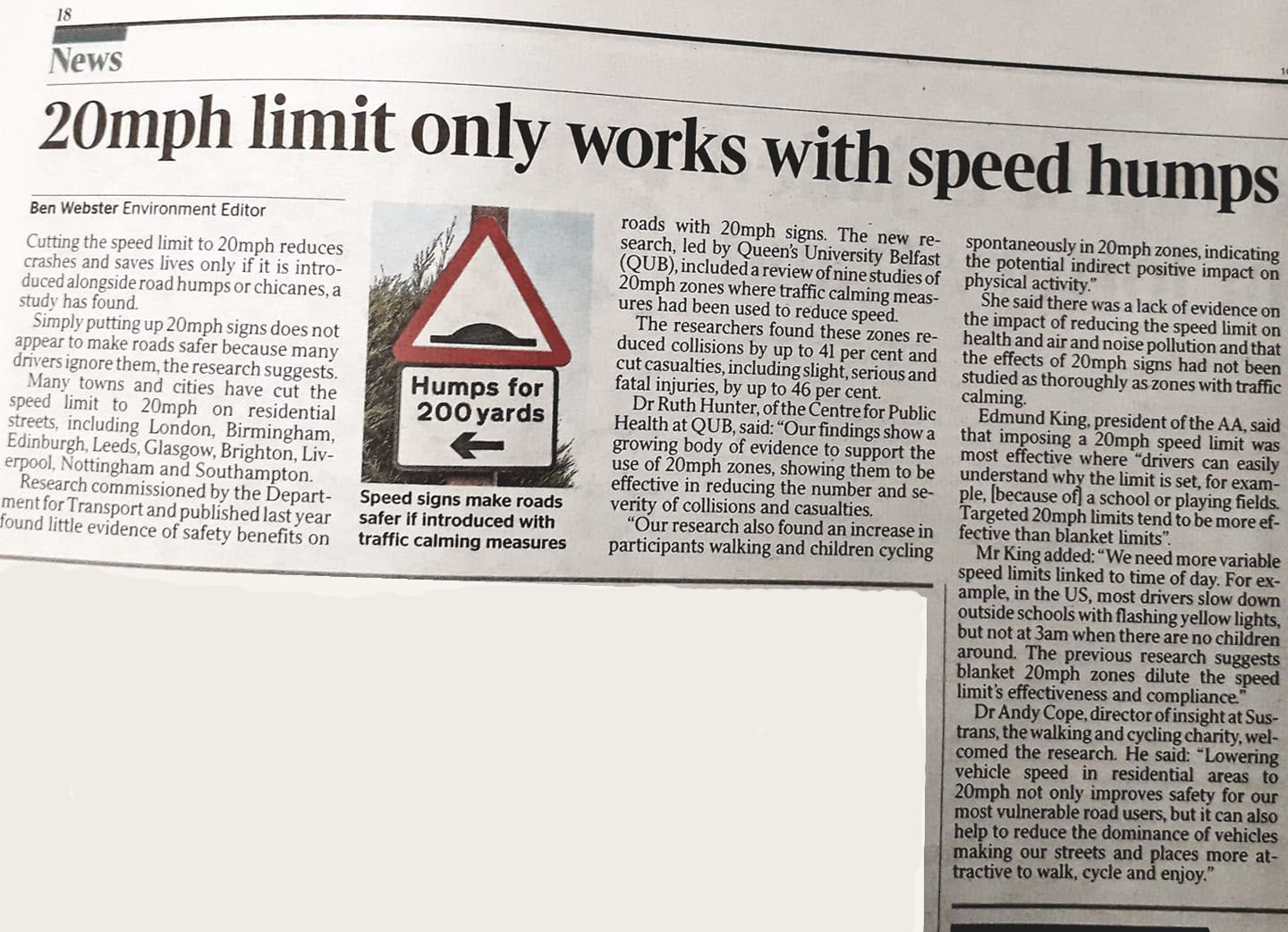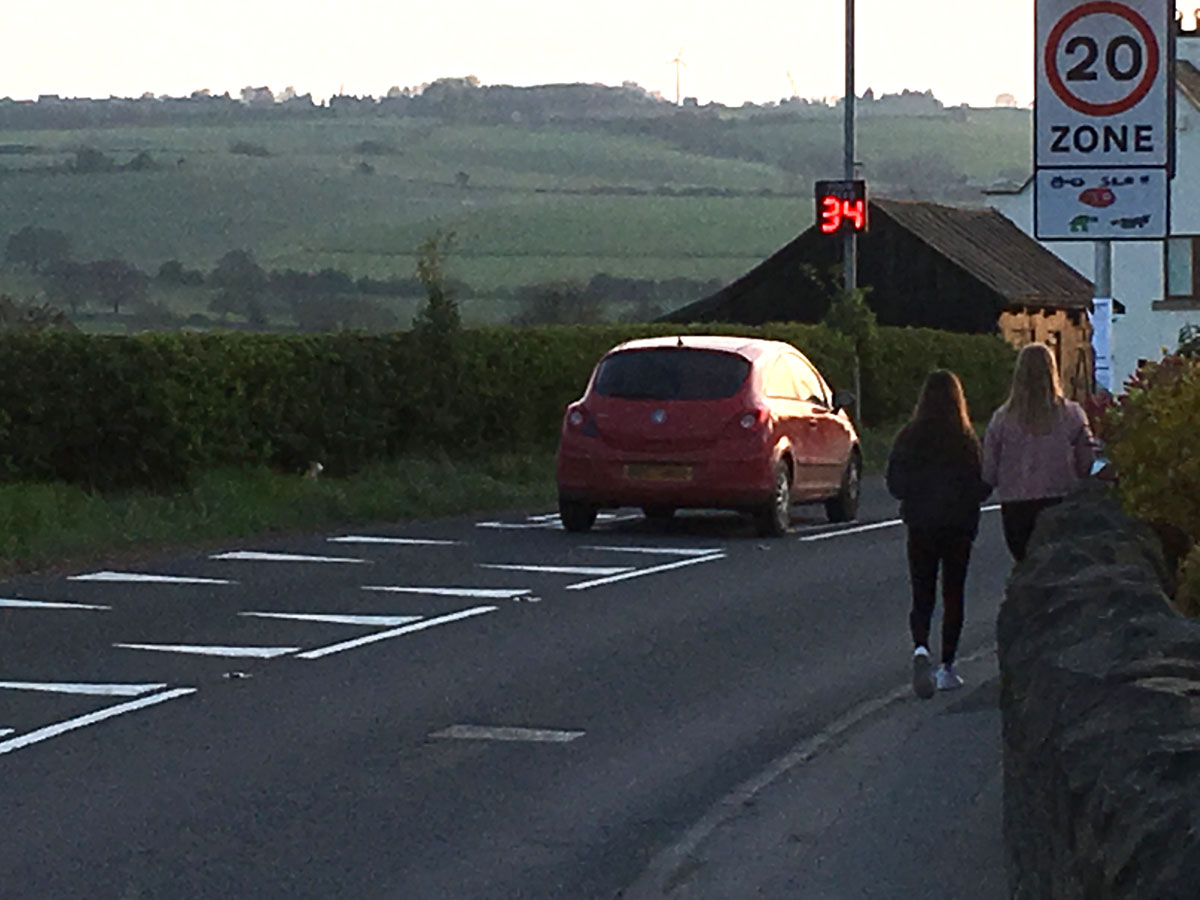5 October 2019 – The Times newspaper
11 June 2019
The Bypass Group has learnt that additional 20 mph signing and lining work should be taking place over the next 2 weeks, weather permitting. In addition, a roundel 'no coaches' sign will be added at the Grange Moor end of the village to emphasise the 'no route through Flockton'.
Concerns Raised Over New Speed Limits
21 April 2019
"The new 20 mph speed limit is a total waste of time , on my walk through Flockton this morning the average speed is still around 40 mph . I've lived in this village for almost fifty years and the road now is worse than it's ever been." – Richard H
Read other posts by concerned villagers, here.
11 April 2019
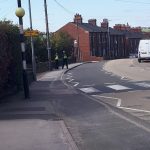 Police appeared to enforce the 20 mph traffic signs for the first time. Residents reported that they were there between 5 minutes and an hour. (The exact period of time is not known).
Police appeared to enforce the 20 mph traffic signs for the first time. Residents reported that they were there between 5 minutes and an hour. (The exact period of time is not known).
18 March 2019
Here they are – a little earlier than expected. Complete with artwork by children from Flockton C of E C First School.
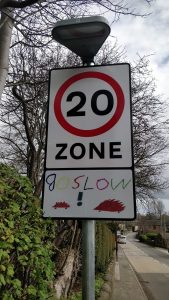
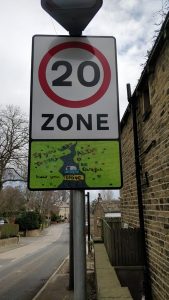
There will be 4 signs altogether. More information to follow…
There are some nice photographs on the school's public facebook page. I am currently awaiting a reply to see if we can have permission to embed the post on this page.
Update: April 2019
"Following on from the installation of the 20mph zone, I have talked to Highways about some of the comments I have been receiving from local residents. Highways have agreed to install some more 20mph roundels, so that there is more visibility of these through the 20mph zone and they will also be arranging to paint 20mph signs on the road surface at the access points." – Cllr. John Taylor (as posted on Flockton facebook pages)
"Further to John's post regarding the 20mph Zone, we have also had a note from the Police that they will be undertaking some enforcement in the next few weeks." – Cllr. Richard Smith
Update: 10 April 2019
Posted to the Flockton Bypass facebook group (10 April 2019) by David Rawling:
An extract from Section 12 of the link. The last paragraph tells us what the community already know, but needs the authorities to act upon:
 The study has shown that the speed at which people drive is influenced more by the look and feel of the road, than whether a 20 mph or 30 mph limit is in place. It appears that some roads where 20 mph limits have been implemented are naturally ‘self-explaining roads’ where drivers ‘instinctively’ drive more slowly (because their length provides less opportunity to build-up speed, visibility may be limited, drivers do not feel that they have sufficient space to drive faster or feel that it is appropriate to do so, and because they serve local start/end destinations only). In other cases, the look and feel of the road naturally encourages higher speeds. In many cases the implementation of a 20 mph limit has simply formalised existing behaviour.
The study has shown that the speed at which people drive is influenced more by the look and feel of the road, than whether a 20 mph or 30 mph limit is in place. It appears that some roads where 20 mph limits have been implemented are naturally ‘self-explaining roads’ where drivers ‘instinctively’ drive more slowly (because their length provides less opportunity to build-up speed, visibility may be limited, drivers do not feel that they have sufficient space to drive faster or feel that it is appropriate to do so, and because they serve local start/end destinations only). In other cases, the look and feel of the road naturally encourages higher speeds. In many cases the implementation of a 20 mph limit has simply formalised existing behaviour.
The challenge is how to change driver attitudes and behaviour in other locations. Evidence from this study (and others) shows that bigger speed reductions occur on faster roads, with higher volumes of traffic and providing a locally important strategic function.
Circular 01/2013 encourages authorities to consider introducing 20 mph limits on more major streets where foot and cycle movements are important, but also advises that where average speeds exceed 24 mph, the introduction of signage only is unlikely to lead to 20 mph compliance. This study supports this advice and confirms that on faster roads more needs to be done to achieve compliance and maximise the benefits. Even on these types of roads the actual reduction in speeds has been small, with lowering the speed limit using signs alone leading to a reduction in speed of about 1 mph. Without supporting measures to encourage compliance, there is a risk that non-compliance with the speed limit becomes the norm.
Road Safety Fact Sheet (20 mph zones)
20 mph speed limits on roads: Report into the effectiveness of 20 miles per hour (mph) road speed limits.
Views: 452

